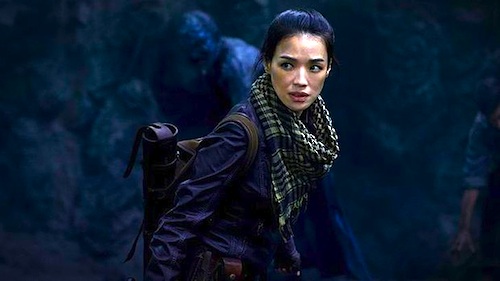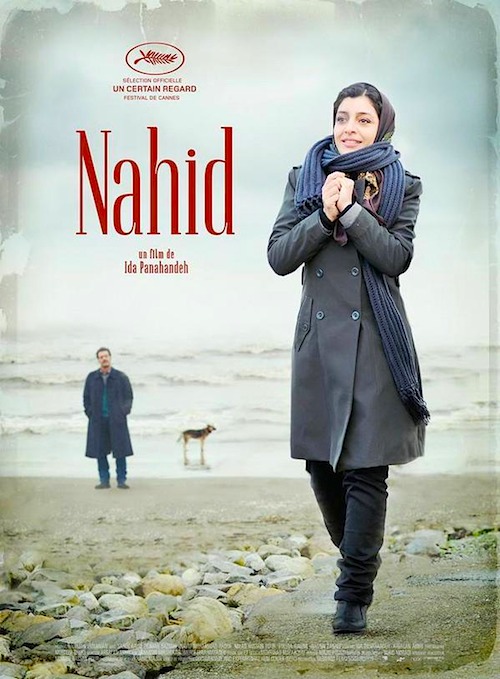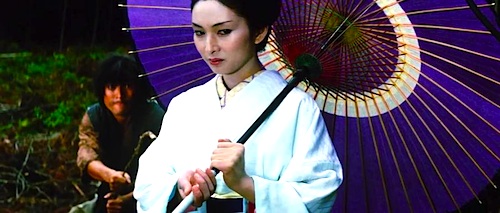By Joe Bendel. It is currently the #2 film at the global box office, nipping at the heels of The Force Awakens. It is also the second adaptation of the bestselling Chinese Ghost Blows Out the Light series of novels. In a weird distribution of rights, one consortium of film companies optioned the first four novels, and another group of partners bought the latter quartet. This is the one starring Shu Qi as American-born Chinese tomb raider Shirley Yang, which partially explains its brisk business. Yang and her associates will shimmy into crypts and flee hordes of zombies in Wuershan’s Mojin: the Lost Legend, which is now playing in New York.
Yang, the Byronic Hu Bayi, and the rubber-faced Wang Kaixuan are trained in Mojin, the art of grave “borrowing.” As per their time honored practice, they carefully light a candle in the corner of each tomb they visit. By blowing it out, the tomb’s ghost makes his displeasure known, forcing the trio to leave accordingly. However, if the candle still burns, then its all good. They are in for an exception to the rule. Things will get bad, but Hu and Wang have seen worse during their first subterranean excursion.
Flashing back to the Cultural Revolution, Hu and Wang are sent to Inner Mongolia as part of their re-education. Both fall in love with the comrade Ding Sitian. She is still adorable, even though she believes the revolutionary slogans far more than they do. Through a strange chain of events, they stumble into an ancient tomb. Of course, the cadres urge them to be “true materialists” and “smash the Four Olds.” Unfortunately, in this case, the Olds are not merely ancient. They are undead.
Hu and Wang carry the scars of their backstory. It is why Hu has never properly put the moves on the super-interested Yang. Similarly, the more impulsive Wang will sign up with a dodgy expedition financed Madame Ying, a Chinese born Japanese industrialist and cult leader in search of the mythical Equinox Flower, hoping he can use it to resurrect the late Ding. Putting aside their Tracy-and-Hepburn-esque differences, Yang and Hu set out to save Wang from his bad judgement. Frankly, they cannot completely blame Wang for the ensuing trouble. The whole deal was brokered by their dodgy agent Grill. At least he will quickly cone to regret it.
Believe it or not, Mojin’s narrative probably makes even less sense on screen, but it hardly matters. Wuershan maintains enough breakneck energy and the all-star cast exudes enough raw charisma to keep the film galloping forward, with or without logic. The special effects are Hollywood tentpole quality and the Inner Mongolian vistas are wildly cinematic. This is a big film, in many respects.
Yet, there were apparently risks involved, starting with its very premise. Tomb-plundering is not exactly politically correct in China these days, which reportedly caused more than a little uncertainty during the development process. The scenes set during Cultural Revolution are also a tad bit gutsy, especially when the Red Guards order the young Hu’s detachment to smash the Kitian artifacts.
Shu Qi is one of the few movie stars working today who can quietly kneecap viewers with a single look (this has been her specialty for Hou Hsiao Hsien, including the recent The Assassin). It must also be noted, Shirley Yang is quite the heroine, since it was Yao Chen filling her boots in Chronicles of the Ghostly Tribe, which American audiences have yet to get a good look at.

As Hu, Chen Kun puts his shaggy look and brooding manner to good use, much as he did in Snow Girl and the Dark Crystal. Bo Huang mostly keeps the shtick in check as Wang, but it is fair to say Xia Yu’s Grill lacks his reserve. However, Angelebaby is acutely cute as Ding, while also bringing some tragic depth to their ill-fated romantic interest. Yet, Cherry Ngan shows off some of the best action chops as Madame Ying’s henchperson, Yoko.
At times, Mojin feels like Wolf Totem with zombies in place of the wolves, which is a cool place to be. Some of the broader, more localized humor fails to land, but there is more than enough adventure, supernatural bedlam, and ironic historical references to keep subtitle readers on-board and invested. In fact, viewers will probably be primed for the competing Ghost Blows Out the Light film franchise and Mojin’s inevitable sequels. Recommended for action fans, Mojin: the Lost Legend is now playing in New York, at the AMC Empire.
LFM GRADE: B
Posted on December 31st, 2015 at 7:39pm.





